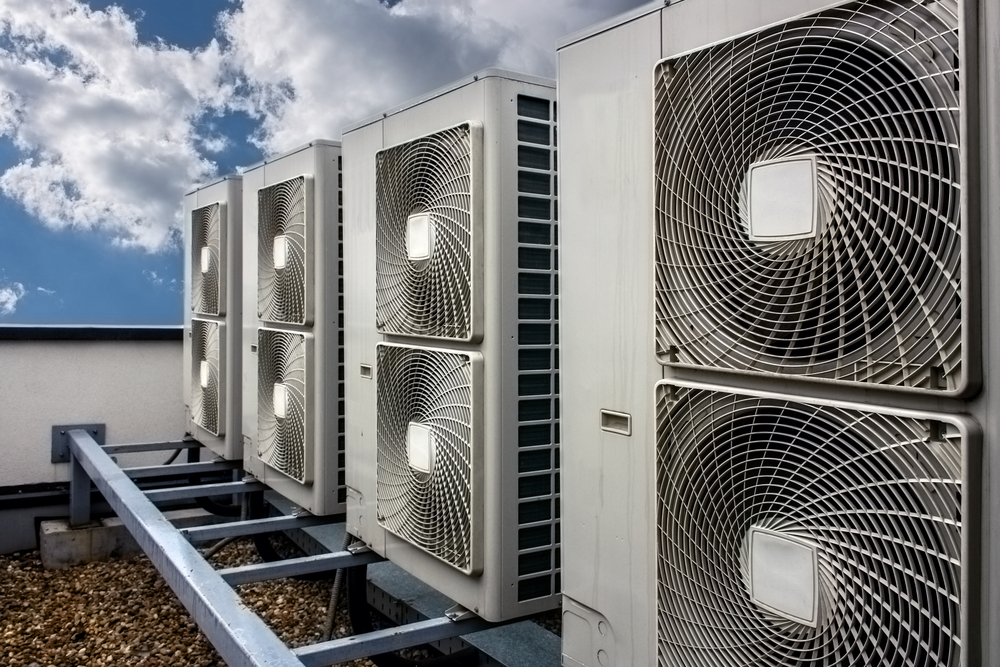Oct 20 2020
From month to month and year to year, the world continues to undergo record high temperatures. This has been worsened by an increasing global population, and it is estimated that the demand for air-conditioning will continue to rise.
 Image Credit: Aleksandar Tasevski/Shutterstock.com
Image Credit: Aleksandar Tasevski/Shutterstock.com
In response to this crisis, new IIASA-led research examined the advantages and disadvantages of seawater air-conditioning as an alternative cooling solution. Conventional air-conditioning is the most widely used technology for cooling and signifies a substantial share of energy demand in warmer areas.
A substitute that is not often considered is seawater air-conditioning (SWAC)—a renewable substitute for cooling in which seawater from the ocean at depths of about 700–1200 m and temperatures of 3–5 °C is pumped to the coast, where it exchanges heat with a district cooling system, and the warmer water is returned to the ocean.
The new research published in the Energy Efficiency journal reports that merely 1 m³ of seawater in a SWAC plant can offer the same cooling energy as that produced by a solar power plant the size of 68 football fields or 21 wind turbines.
The team created a computational model and procedure to estimate the cost of cooling with SWAC globally and assessed the feasibility of using this system as a substitute for energy storage from different renewable energy sources like solar and wind.
The findings indicate that while conventional air-conditioning systems entail a low preliminary investment cost, the energy costs to run them are high; however, with SWAC systems, while the initial investment cost is higher, energy costs to run the system is low.
The chief potential for SWAC is on small islands in tropical places, where the distance from the coast to the ocean depths is less, warm average temperatures are a regular feature all through the year, and energy costs are high. For instance, in Puerto Plata where the electricity costs are $0.16/KWhe, the cost of traditional AC cooling is about $0.08/KWht.
The cost of the SWAC solution would be $0.042/KWht—48% less than the conventional options. In Nauru, supposing the same electricity cost, the SWAC solution would cost $0.0185/KWht—77% lower than conventional technologies.
Although district cooling is typically less feasible than district heating systems, the low cost of cooling with SWAC processes renders district cooling over short distances a feasible substitute.
Potential customers with high cooling requirements who would connect to SWAC district cooling systems include commercial buildings, airports, universities, hotels and resorts, data centers, as well as governmental and military facilities.
The study results also show that additional electricity generation from variable renewable energy sources like solar and wind energy can be equalized with the differences in seawater flow in the pipeline of SWAC plants. This cold water would then be stored in thermal energy storage tanks to take care of the cooling demand at any time.
During months or seasons where the demand for cooling is low, the cold seawater can be used to boost the efficiency of a chiller to freeze freshwater or seawater in the storage tanks. During the months when the demand for cooling is high, both the SWAC system and the energy stored as ice in the tanks can deliver the cooling demand.
Besides the above, the study also proposes a modification to the standard design that can boost the efficiency of SWAC projects with long pipelines, while facilitating expansion to meet increasing cooling demand. The proposal includes expansion of the excavation depth of the seawater pump station, which enables a surge in the velocity and flow rate of the seawater inlet pipeline.
We call this approach ‘High Velocity Seawater Air-conditioning’. This design configuration allows such projects to be built with an initial cooling load and expand the cooling load modularly through smaller additional capital costs.
Julian Hunt, Study Lead Author, IIASA
Hunt did this research during his postdoc at IIASA.
Other benefits of SWAC are a drop in greenhouse gas emissions from cooling processes, its reliability as a non-intermittent renewable source of cooling, and the decrease in water consumption in cooling systems.
Furthermore, it could act as an economical alternative for large-scale cooling in tropical nations where it could lower the costs of food and grain storage, thereby helping to minimize the vulnerability of developing nations to climate change.
With the latest attention gained by hydrogen manufacture and hydrogen-based economies, SWAC could even be integrated with hydrogen liquefaction plants, where it could enable a decrease in energy consumption during the hydrogen liquefaction process by about 10%.
However, the team warns that regardless of its potential and many benefits, this technology also has complications. The return of the seawater should, for example, be regulated with utmost care to reduce its impact on coastal wildlife; retrofitting district cooling infrastructure and buildings could result in high capital costs, and there is a danger of thermal shock and high nutrient loading in the deep seawater outlet.
While it does have its challenges, seawater air-conditioning is an innovative and sustainable technology that has great potential for expanding into a benchmark system for cooling in tropical locations close to the deep sea and will help fulfill our cooling needs in a warming world.
Julian Hunt, Study Lead Author, IIASA
Journal Reference:
Hunt, D. J., et al. (2020) High velocity seawater air-conditioning with thermal energy storage and its operation with intermittent renewable energies. Energy Efficiency. doi.org/10.1007/s12053-020-09905-0.
Source: http://www.iiasa.ac.at